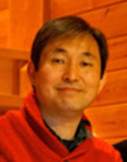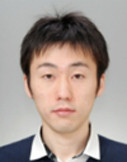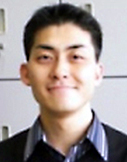The First ISAS Award (FY 2014)
The space science and exploration projects of JAXA are conducted with the participation, cooperation and support of a lot of researchers and engineers not only from the JAXA, but also from the universities and research institutes outside our agency.
In order to honor those who come from outside our agency and have made remarkable achievements and contributions being the key to making the projects succeed, the ISAS, JAXA established The ISAS Award in November 2014.
After the selection by the committee in our institute, winners of the memorable First ISAS Award are listed below.
Yasuo Doi
Assistant Professor at Graduate School of Arts and Sciences, The University of Tokyo(Infrared Astrophysics)

Reason for Award
Development of the far-infrared detector on the infrared astronomy satellite AKARI (ASTRO-F) and the creation of the high resolution far-infrared all-sky image data
Dr. Doi has made big contributions to the success of the Infrared all sky survey of Japan’s first infrared astronomy satellite, AKARI, by playing a significant role in all the processes such as device development, observation and data processing.
Far infrared rays have the wavelength of about 0.1 mm, which is the key wavelength band to reveal the birth of stars and planetary systems. With the effort of Dr. Doi during the production process of the detector, we succeeded in developing the detector for AKARI with the highest resolution in the world.
After the launch of AKARI, Dr. Doi set up the plan for satellite attitude operation and detector control according to the observation target, succeeded in the all-sky survey for 17 months, and also played a significant role in analyzing the observation data. He developed the program to extract the true signals from the output signals with noise from the detector, and finished the far-infrared all-sky image with the world’s highest resolution within the far-infrared wavelength band. The image data has been published to the astronomers all over the world through the internet by ISAS, JAXA, and the image data are expected to make more contributions to the researches in various fields of astronomy.
Yasuo Doi
Present position since 2007, after being research fellow of science and technology in Japan Science and Technology Agency and an assistant at The University of Tokyo.
Promoted the basic development of the far-infrared detector after graduate school and installed the finished detector on the satellite “AKARI”.
Created and published the far-infrared all-sky image for the astronomers all over the world in December, 2014.
Currently analyzing the image data of AKARI and participating the next infrared astronomy satellite, the SPICA plan as the Japanese representative of the far-infrared detector.
Tomohiro Yamaguchi
Mission Analysis Engineer at the GMV Co(Spacecraft Dynamics; Space Systems Engineering)

Reason for Award
The orbit dynamics evaluation and flight analysis of the small solar power sail demonstrator IKAROS
Dr. Tomohiro Yamaguchi participated in the development of the small solar power sail demonstrator IKAROS and even the operation after launch, and additionally took part in the orbit dynamics evaluation and flight analysis.
Dr. Yamaguchi confirmed accelerating with sunlight pressure, elucidated the orbital motion of the solar sail probes, as well as analyzed and evaluated the orbit control using sunlight pressure, which were all main purposes of IKAROS.
In addition, he elucidated the relation between the orbital motion and the complex structure and material properties during practical sail, where the reflection characteristics are distributed according to different optical properties of different places and wrinkles in the space, and considered a technique for putting a direct relationship between the flying data of IKAROS and the orbital motion of the solar sail probes.
This technique is different from the conventional deep space orbit determination technique, which only estimates the position and speed of the probes. There is a feature that it handles the unknown amounts such as attitude and orbital motion at the same time to improve the estimation accuracy. It uses the features of solar sailing, making it a technique with both practicality and originality.
In addition, Dr. Yamaguchi has also built the foundation for the orbit determination group of ISAS, JAXA to conduct the navigation of solar sail probes, and has made great contributions to the development and application of the IKAROS project and future space exploration plans.
Tomohiro Yamaguchi
2012: Finished the doctor’s degree in space science at School of Physical Sciences, SOKENDAI (The Graduate University for Advanced Studies).
2009-2012: Research Fellowship (DC1) of Japan Society for the Promotion of Science Did orbital analysis for the Hayabusa and IKAROS at ISAS, JAXA as a doctoral student.
Participated in researching and developing deep space probes (the ExoMars plan, JUICE plan, etc.) as a contractor of the ESA-ESOC Participating in research on orbital mechanics of the future solar sail probe programs after going to Europe.
Hiraku Sakamoto
Associate Professor at Department of Mechanical and Aerospace Engineering, Tokyo Institute of Technology(Space Structural Engineering)

Reason for Award
Structure research on realizing the storage and deployment of the small solar power sail demonstrator IKAROS
Prof. Hiraku Sakamoto has made great contribution to the deployment of sail, which is the most difficult mission of the small solar power sail demonstrator IKAROS. In particular, he built a most rigorous sail model, and after numerical analysis, he pointed out the influence that the infinitesimal rigidity of the membrane surface will have on deployment. By verifying this in ground tests, he revealed the conditions for deploying the sails stably.
In addition, he has also considered a back-up control method to support the deployment of the sails by injecting thrusters if the membrane surface got stuck during deploying.
These research results were applied to the design, production and operation of IKAROS, and led to the success of the IKAROS mission.
Furthermore, Prof. Sakamoto, in the study team on the next solar power sail, has proposed a method for storing an ultra-large sail of several thousand square meters class. This is a method for winding the sail taking the thickness of the membrane surface into account, which has been proofed highly reproducible in ground test.
Currently, aiming at the generalization of solar power sail, Prof. Sakamoto has proposed a sail deploying method using a boom and is conducting researches actively.
These highly appreciated achievements have been presented in conferences home and aboard, as well as published on a lot of scientific journals.
Hiraku Sakamoto
2004: Finished the doctor’s degree at University of Colorado at Boulder.
Participated in the IKAROS project since 2007, after the Postdoctoral Fellowship for Research Abroad and the Research Fellowship (PD) of Japan Society for the Promotion of Science.
Assistant Professor at Graduate School of Engineering from 2008, and present position since February, 2015.
